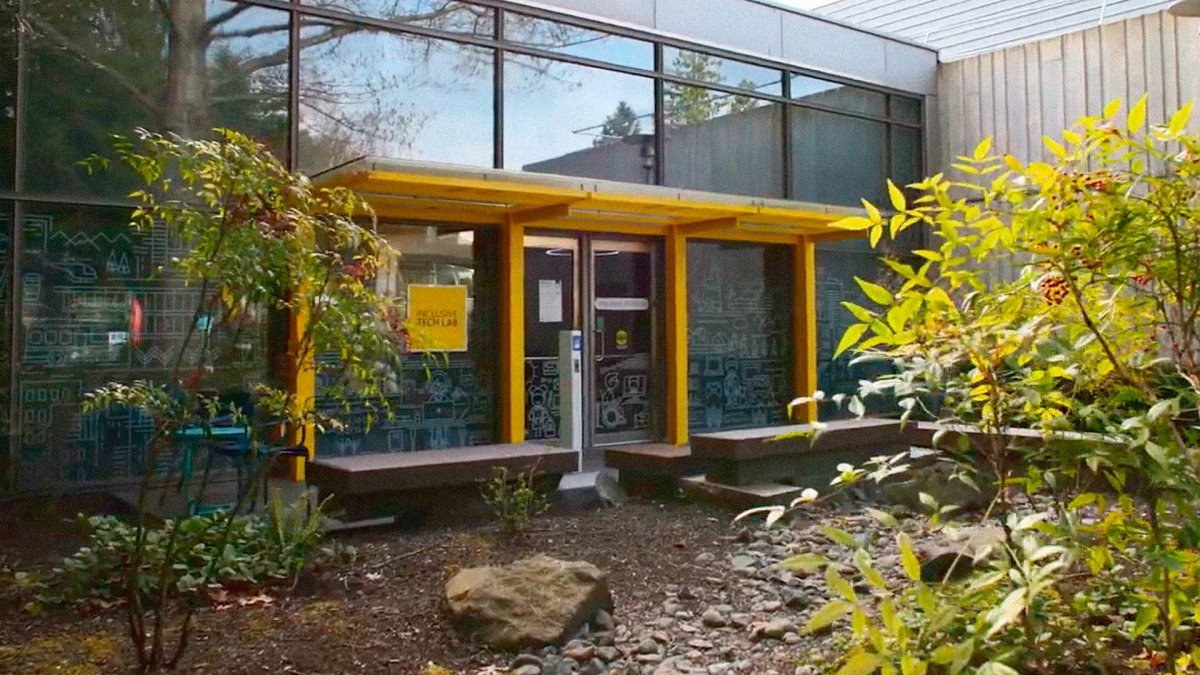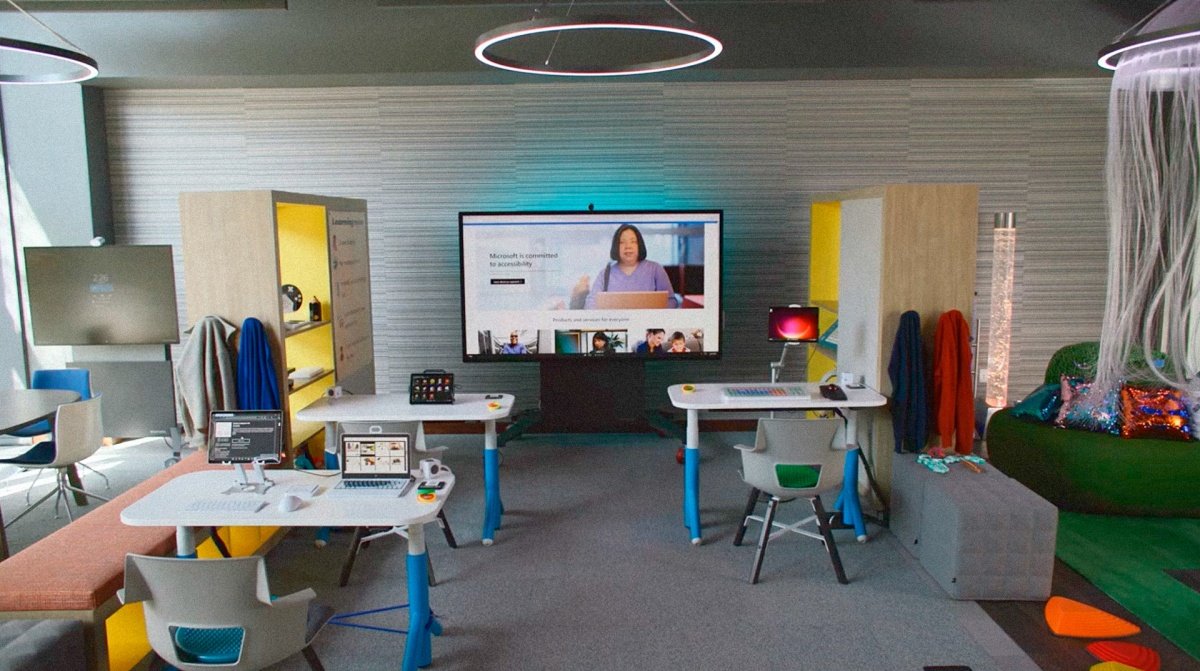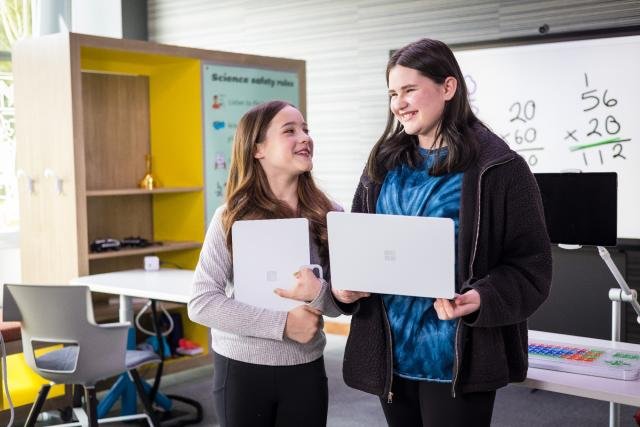Studio Every Conversations: Bryce Johnson from Microsoft, with Niall from Studio Every
It was our privilege to chat with Bryce Johnson, the Inclusive Lead at Microsoft - an organisation forging ahead with its approach to inclusive design.
Bryce was a co-founder of Microsoft’s Inclusive Tech Lab and one of the co-inventors of the Xbox Adaptive Controller.
He has worked on both hardware and software projects in his 15 years at Microsoft.
1. Can you introduce in general terms how Microsoft think about inclusivity?
Quite honestly in our inclusive design practice at Microsoft, we were a little cocky when we first started around the idea of Universal Design. There was this overly simple idea that universal design was one-size fits-all. We feel like we know better now.
I actually think a lot of people still want the notion of one-size-fits-all. But, for us, it’s one-size-fits-one.
2. How can the one-size-fits-one ambition manifest as a product range?
What we think about in hardware design, and we're going be publishing some material on this soon, is a spectrum of: devices, accessories, and augmentations. How do you combine these in a way to make your setup feel more like you.
Let’s say you're a stylus person. A normal stylus requires a lot of finger pressure to hold and if you're a quadriplegic, you might not have that dexterity. But imagine that I slide this pen into an additional shaped sleeve. I don't have to put pressure on that single tip and I can hold it a different way.
In this example, the device is the computer, the accessory is the stylus and the augmentation is the sleeve.
Image credit: Microsoft
3. The Microsoft Inclusive Tech Lab is now well documented. Has it led to a particular way you approach inclusive design?
My understanding of empathy, I think.
The challenge, at least from my perspective, is everyone's being big on empathy. It’s a great instinct to have but I just don't believe in this simplistic, empathetic idea that you can put yourself in someone else's shoes. I’ve seen too much of that not being possible.
“I don’t strive for empathy. I strive for compassion and altruism.”
I can sometimes be in the minority here, but I don't strive for empathy. I follow Matt May (former Adobe Head of Inclusive Design) on this: I strive for compassion and altruism. I want to do the right thing, so I'm going to go out and listen to people, hear their stories, really understand their stories, and try not to internalize it.
Image credit: Microsoft
“You cannot put the responsibility of design onto non-designers.”
4. If that’s the case, clearly you look to include the accessibility community?
We place a lot of emphasis on: “nothing about us without us.” We talk constantly about, not trying to design FOR this community, trying to design WITH this community.
But there needs to be an understanding that you cannot put the responsibility of design onto non-designers. That's just not fair, you know, and I see it a lot.
The accessibility community wants and asks for all-the-features-all-the-time. They don't necessarily quite get that is an overload or how it could fulfil their needs. They know that they're excluded, but they might not be able to articulate exactly what they need to be included.
We talk a lot in our practice about the design concept of synthesis.
People talk about inclusive design as accessibility upfront. A rigorous practice in the design cycle, as if there are checklists that you follow to fix all this stuff. The problem is that comes from a clinical or analytical mindset trying to be applied to design – not the idea of synthesis.
Image credit: Microsoft
5. It seems to us that what you create fits your approach whilst still delivering market quality design and aesthetics?
I joke that my biggest competitor is duct tape and cardboard!
I once met with Richard Ellenson (CEO of the Cerebral Palsy Foundation at the time), who was visiting Microsoft. What he liked about our original direction on the (Xbox) Adaptive Controller was that it could be recognized as a game controller, so he felt the familiarity reduced some stigma.
In the end, we went in a different direction, which felt visually like part of the Xbox family but had refinements to make sure that we could deliver the right functionality without stigmatizing the user in different way – a great looking product.
“We hear that loud and clear from the community: ‘I deserve nice things.’”
6. Much like sustainability driven innovation, we're interested in how inclusive first products can sometimes come at a higher cost. Is that something you have to balance?
I think it’s worth thinking about value over price sometimes.
We do struggle. The Adaptive Controller was $100. Which at the time was a great price point, but then you have a community who rightfully say that regular controllers are $60.
We make controllers by the millions, and we make Adaptive Controllers by the thousands. So, there's economies of scale tightrope.
Luckily Microsoft believe they have a responsibility, and we can invest in these things.
There is also long-term financial sustainability to keep an eye on. There's been wonderful assistive technology over the years that is no longer available because someone couldn't afford to keep their doors open.
7. How far do you think we've come in the last decade?
In some ways it's night and day. I started an Xbox in 2010 and I always cared about accessibility. I'd be one of the guys in the meeting going, ‘Hey, what about disabled folks.’ Leadership would tell us to ‘sit down’ because that was not a priority. It’s because they just didn't understand at that time.
But it wasn't until 2013 that anyone even looked up and paid attention.
Image credit: Microsoft
8. So how do organisations get started with a move to being more inclusive with design?
It takes a long time. We see a lot of people come in and say, ‘You guys are so advanced. How did you get here?’
“The reality is, that we started earlier than them.”
The Adaptive Controller took 18 months of trying to demonstrate the value before someone said: ‘OK you guys can go do it’ and that is an organization that by then believed in accessibility.
The has been some hustle along the way. The first version of the Inclusive Tech Lab was a bunch of equipment and toolboxes under my desk that I'd pull out when needed. The very first version of a space was as a ‘roomate’, to a testing team.
Inclusive Tech Lab 1.0 had no budget, still using the same boxes from under my desk and was solely focused on gaming. But with Inclusive Tech Lab 2.0, the current one, we now endeavour to reach across all of Microsoft's products.
9. And is there something in hiring diverse teams?
Absolutely. 100%. If there's a quadriplegic on the team or in a position of influence, they will be pushing and they will have an articulation about a lived experience.
You know, my boss is a guy named Dave Dame and I was on the hiring loop to hire him. We were looking for someone to lead the team that could sit in those meetings and represent our work with an authenticity.
Having people in the organization to constantly represent the community is crucial. And I think that's where we are ahead of other people: we have a lot of disabled employees.
Image credit: Microsoft
10. How do you build a groundswell of people committing to being more inclusive in their projects day-to-day?
It helped that before Satya (Nadella) was CEO, he was the executive that championed accessibility. When the Ability Summit event started, it only had 300 employees just hanging out in a room. And Satya was in that room.
When he became CEO it meant we could be top-down and bottom-up but he wouldn’t let us rely on him – he wanted us do make things happen.
Inclusive Tech Lab is important because we have a place where colleagues can experience that their point of view is not the only one. We wanted to have a space for the accessibility community on campus that was ‘their house.’
It means when engineers and designers come into the Lab they get a rude awakening, because I’m not going to cater for their needs. I absolutely set up situations to make them feel discomfort. They realise it’s not about the content they’re fed, it's about the experience and the presence of being there to build the right mindset.
11. Would you say there's a certain mentality those in a bottom-up position need to have?
For us it’s been a story of fighting and asking for forgiveness.
You know, the Adaptive Controller project would get cancelled many times. And the team would just still work on it.
What does this mean? You need people with a rebellious streak to just keep pushing forward.
Image credit: Microsoft
12. And are there any behaviours in the team which helps with the long-term?
It could be much easier for me to just tell people what to do and be like ‘I'm the Adaptive Controller guy, go do it.’
But that’s not building a community. That’s not changing how people think about these things. We'd just be bullying people into doing things. We can’t guilt people into doing what we think is right. We need to build a culture otherwise it just wouldn't be sustainable. It would be reliant on a certain few individuals staying in the organisation, otherwise it would fizzle out.
“Eventually you’ve got to stop looking at the forest and start paying attention to the trees.”
13. How would you like to see organisations building that culture?
If you look at Chief Diversity or Chief Accessibility Officers, the mandate that these folks have is across employee experiences and PR, mainly.
What I hope to see soon, are more engineering and design leaders that think about this work than there are today, so they can influence both the broad and deep conversations that need to happen.
We do need to stop talking about ‘not excluding people’ and just start including people.
I don't think there's pitfalls to intersectional inclusivity, but eventually you’ve got to stop looking at the forest and start paying attention to the trees.
Image credit: Microsoft
14. Where is inclusive design heading?
When people come to me and they go, ‘I've cracked the code, I've got the one thing that's going to make this all work,’ I just don't get excited.
“I hope that where inclusive design is going is a recognition that like there is no code to crack. That there’s just a lot of hard work and tuning.”
15. Finally, where is AI's place in this conversation?
There's a quote from Mary Pat Rattenberg, who was an accessibility specialist at IBM in the 1980’s. She said, “for most people technology makes things convenient, but for the disabled, it makes things possible.”
I sit in meetings where technology folks are like, ‘AI is going make it easier for me to plan a meal or plan a trip – that’s so cool.’ But they're just talking about convenience. It wasn't hard to do any of those things before, right?
What is AI going to do to make someone with disabilities be able to do something independently for the first time? That’s what I'm most interested in.













